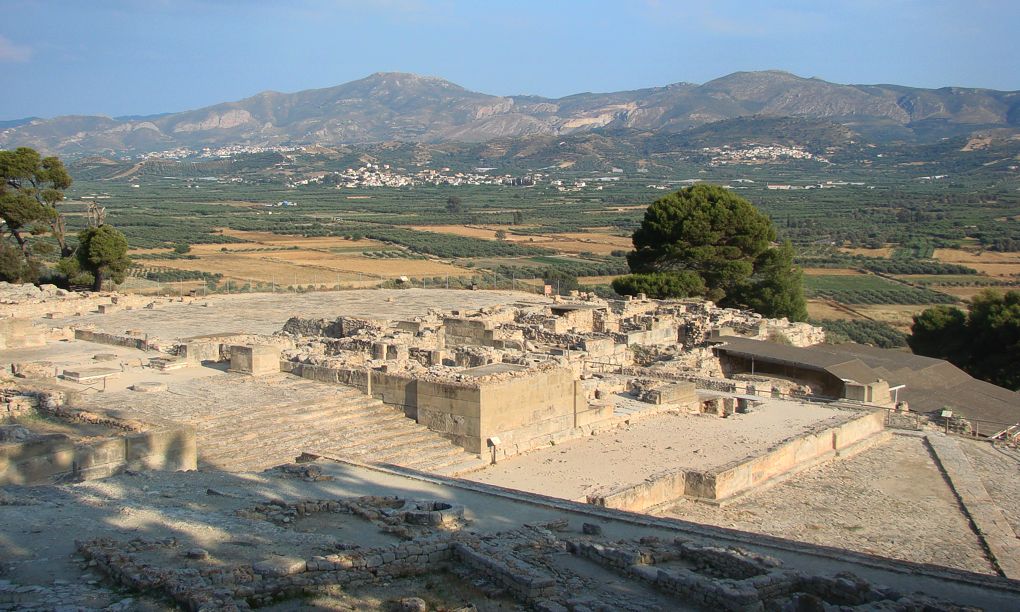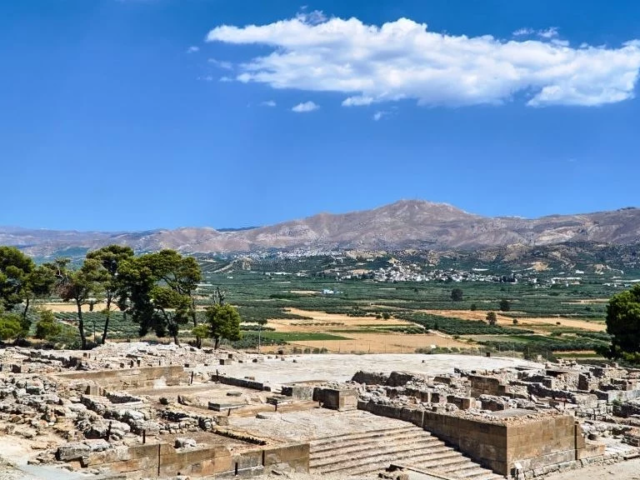
Faistos
The ruins of the city of Phaistos (or Festos) lie on a hill west of Mires on the way to Tumbaki. The older palace of Phaistos (1900 – 1700 B.C.) was built on embankments of Neolithic and Early Minoan periods (3000 – 2000 B.C.). This old palace, with basic features of Minoan architecture (paved yards, multi-gates, well-kept facades, skylights etc), had been destroyed and rebuilt twice. After another disaster around 1700 B.C. the ruins were leveled and on top of them a newer palace was built whose life lasted approximately up to 1450 B.C. In the western wing a huge chamber is of interest. It concerns a room supported by pillars and a triple pylon towards the central yard for the possible use of worship. In the same wing there are other rooms which are associated with worship.
The central yard preserves its pavement which is dated to the Palaeoanactoric Period (1900-1700) B.C.
In the eastern wing only a small section is preserved which includes a room with skylights and purification tanks. In the northern wing lie the “royal suites”. The sacredness and formality of these suites are emphasized by the exterior wall of the central yard which has protrusions and recesses in a symmetrical layout, the nearby central entrance with half pillars, as well as the altar placed on a small flight of stairs which lies in the corner between the north and west wing. A long corridor and interior yards give access to a complex of rooms and to a larger yard with a ceramic furnace in the center.
Archaeological finds from the palace are exhibited at the Museum of Heraklion, such as the famous disc of Phaistos, the large collection of vases with a variety of decorative colours and many more.
In the modern day, you can visit the archaeological site of Festos to see all of its history from close-up…


